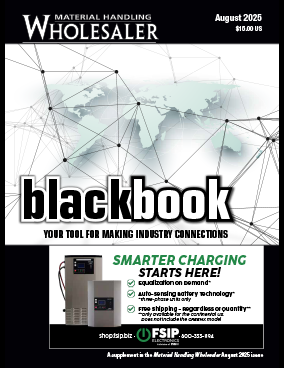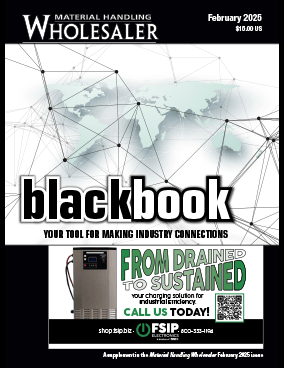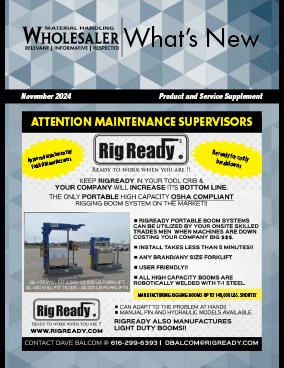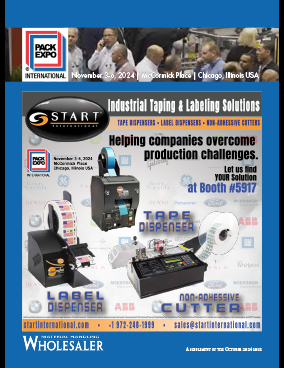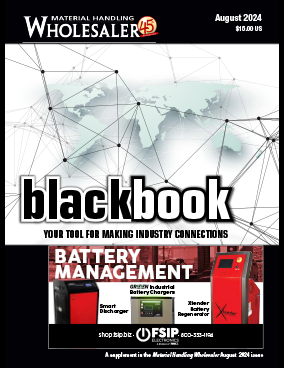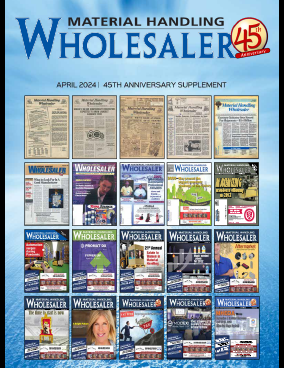Warehouse efficiency might seem simple: keep forklifts charged and maintained so product keeps moving. Know where product is and have product in highest demand in the most accessible place. Keep conveyors clean and people safe to operate at optimum efficiency. Minimize downtime.
All of that works, but requires diligence and data that is analyzed after it is collected. But sometimes, the next step toward efficiency is a new one. At Miner Corporation, “we created a warehouse within a warehouse, brought a hardware store into our facility,” said Fred Renteria, vice president of sourcing and vendor services. The innovation put 250 items that technicians need for jobs in one place so “they don’t have to make stops to replenish. Technicians on the road have what they need. The right part, the right suppliers, in the right place,” he said.
The result has been repairs done more quickly and “significant productivity gains over the last year,” Renteria said.
Beyond data, technology also allows workers to “know where product is at all times,” and can create an “auto replenish system that really does away with old hand inventory count,” he said.
The value of efficiency is “part of the corporate culture and what we’re trying to deliver to the customer,” Renteria said. It is pervasive and reinforced throughout the company.
The forklift battery, how it is used, charged and maintained, has everything to do with how much product is moved to the dock during a shift, said Lynda Stephens, director of information solutions at EnerSys. The forklift battery is the heartbeat of a warehouse, she said. To manage a fleet most efficiently, measures have to be taken and analyzed to find the root cause of any inefficiency and correct it, Stephens said. Until technology advanced, battery purchases were largely anecdotal or based on last year’s order. Now, critical thinking can be applied to determine the most efficient purchase. Other aspects of warehouse efficiency have been measured, and “we’re finally getting to batteries,” Stephens said. “It’s not enough to just report back to the customer what happened. You need to analyze the root cause,” create an action plan and set benchmarks, she said.
“An organization cannot increase efficiency until they understand their current productivity drivers. Measurement is the first and most important part of increasing efficiency. It is simple in concept but can be difficult to execute and analyze properly. Once current baselines are understood, matching operational capability with required work is a simple step to lower costs and increase efficiency,” said Brian Quigley, director of pre-sales engineering and client services at TotalTrax. “In the era of increasing regulation, e-commerce and social media, supply chains are no longer isolated cost centers that do not impact revenue. They are increasingly interconnected and visible parts of the organization.”
Inventory management, order accuracy and delivery time are all tied to the bottom line, he said. “Organizations that can understand the data that drives their supply chain will be quicker to market than the competition, have lower cost, better margin and a more positive customer experience,” Quigley said. That means constant review of assumptions and willingness to adapt.
“They sound like buzz words, but the “internet of things” and “cloud computing” are real and will increasingly be a key factor in the warehouse of the future. Cloud computing will enable increasingly powerful software tools with simpler roll out and lower maintenance and IT costs. Data that shows how each business unit and their assets interact and impact the organization, how they contribute to or subtract from the bottom line, will power growth in efficiency,” he said.
“The first step in maximizing efficiency within any warehouse is to assess the site and application in which the battery charger technology is being implemented,” said Jim Lichtenberg, business manager at AMETEK Prestolite Power. “The environment and operation should be considered when determining which technology will provide the most value.” An on-site power study can evaluate the energy use, take environmental conditions into consideration and recommend the appropriate charger model.
“As the global economy grows, it is important for companies working within the supply chain to keep up with the increasing pace of demand for product by maintaining warehouses to run as efficiently and smoothly as possible,” Lichtenberg said. “The use of data will continue to be vital to warehouse operation managers in managing efficiency, particularly the use of analysis tools that make the data access easy, user-friendly and clearly present the patterns of battery and charger usage within a facility. “Additionally, there is a need for innovation in battery management system technology to reach a point where it is intelligent enough to require little to no supervision and to be able to accurately measure a battery’s state of charge,” Lichtenberg said. That technology is being developed, he said. “An accurate measurement of battery charge will prevent frequent motive battery charging, minimize costly battery replacements and take manufacturing and warehousing operations to a new level of efficiency,” he said.
“Most importantly, a battery management system should be implemented. Ultimately, the goal of a battery management system is to deliver data that can be used to prevent down time and maintenance, while ensuring a longer usage cycle and lower energy costs, which results in lower total cost of ownership,” Lichtenberg said.
Forklift drivers are the frontline, and can help spot a problem early. And other employees can flag potential problems before they stop work.
“Making sure their core warehouse material handling conveyors are proactively cleaned, serviced and maintained is a key factor to not only increase efficiency but decrease any unwarranted downtime,” said Cheryl Miller, director of marketing for Multi-Conveyor. “If you’re hard on your conveyors, it may be wise to stock critical conveyor replacement parts that can save time and money in the long run. Conveyors play an essential part of the material handling needed to run warehouses cleanly and efficiently. Make sure they’re running at optimum performance.” Conveyors need to be safe, easy to clean, reliable and fast.
“Ultimately, the industry must trend towards conveyors that are cleaner, safer, faster, more reliable, sustainable, cost-effective and technologically advanced to meet the needs of all segments of the business,” Miller said.
Mary Glindinning is a freelance writer who has worked at daily and weekly newspapers for more than 20 years. She lives in rural Shullsburg, Wis. E-mail editorial@mhwmag.com to contact Mary.






